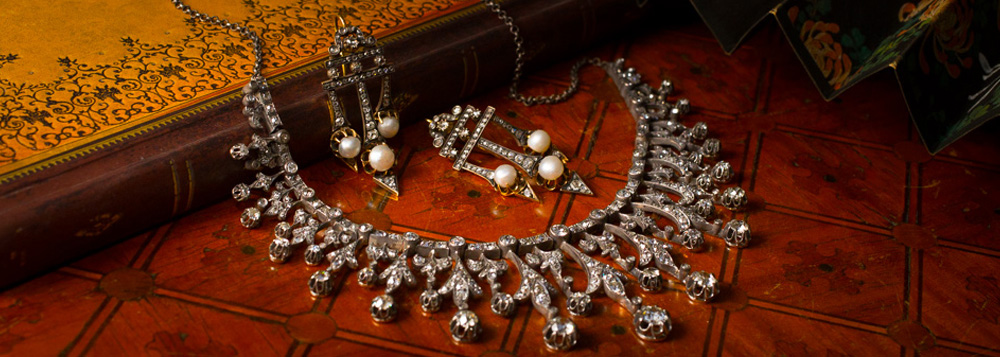Jewellery
- Gold Jewellery
- Silver Jewellery
- Platinum Jewellery
- Diamond Jewellery
- Gemstone Jewellery
- Traditional Jewellery
- Tribal Jewellery
- Jadau Jewellery
- Kundan Meena Jewellery
- Temple Jewellery
- Mughal Jewellery
- Pachi Jewellery
- Thewa Jewellery
- Victorian Jewellery
- Faishon Jewellery
- Filigree Jewellery
- Tribal Jewellery
- Handicraft Jewellery
- Brass Jewellery

Victorian Jewellery
During the reign of Queen Victoria, the aesthetics of jewellery underwent several changes. Historians divide the reign of Queen Victoria to three parts the Early Victorian or "Romantic", the Middle Victorian or "Grand" and the Late Victorian or Aesthetic periods. Each of these periods has its specific gems, motifs and metals and fabrication techniques.
The Romantic period represented deep religious and emotional states. Religion was a central part of life, and with this came emphasis on ideas such as love and nostalgia. The period reflected the love of the new ruling couple (Queen Victoria and Prince Albert). Recurring jewellery motifs include: hands, hearts, crosses and knots. Motifs inspired from nature were also common such as serpents and snakes along with bird, flowers and trees. as a matter of fact, snake jewellery was considered a symbol of eternal love. Jewellery reflecting the form of a flower was often lavishly adorned with gold and gemstones. most gems used are agate, amber, amethyst, diamonds emerald and Quartz.
The Grand period is a contiuation of the Romantic era in a sense that a lot of trends that started in the Early period reached their peak in this one. Although a dainty locket containing a picture of a loved one or a lock of hair pinpoint the piece as Romantic Period jewelry, a brooch with a dark gemstone framed with braided hair would indicate that the piece is from the Grand period.